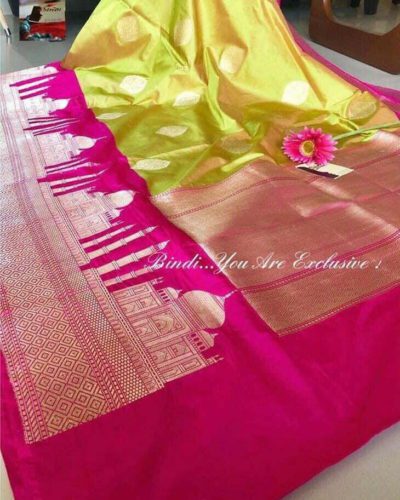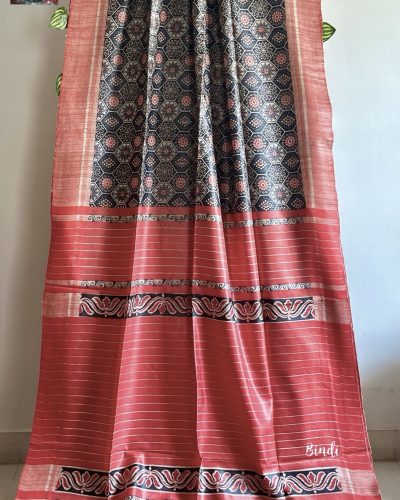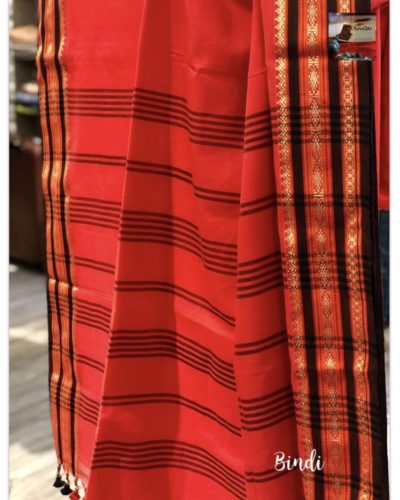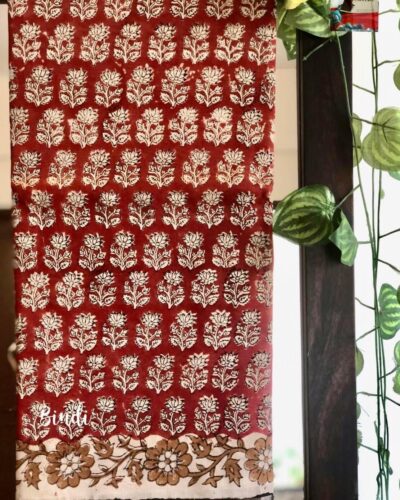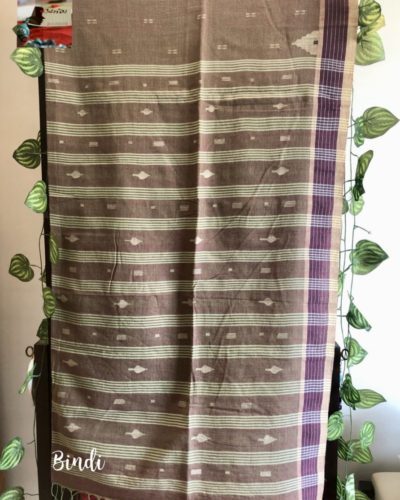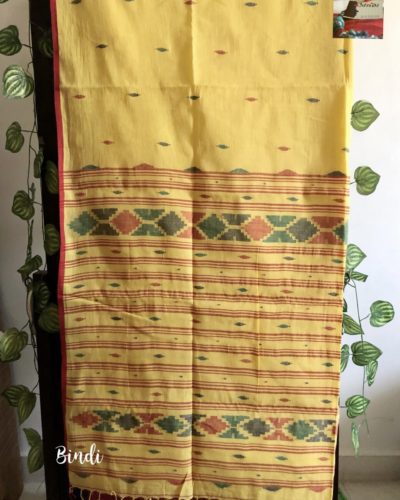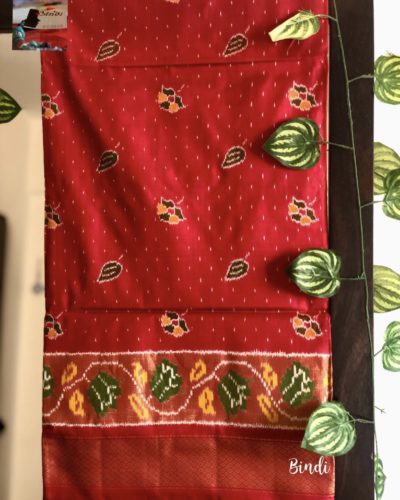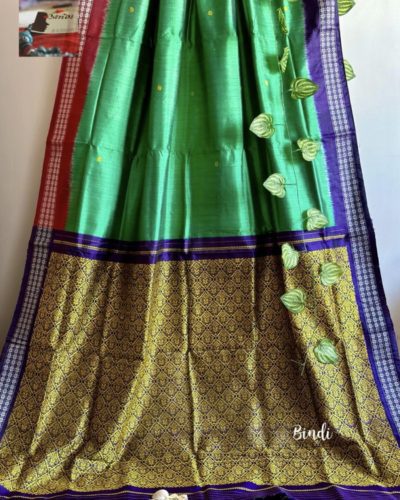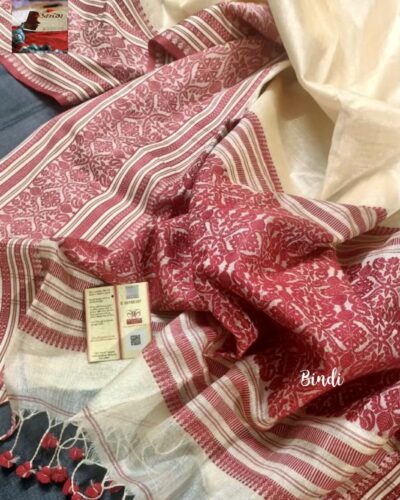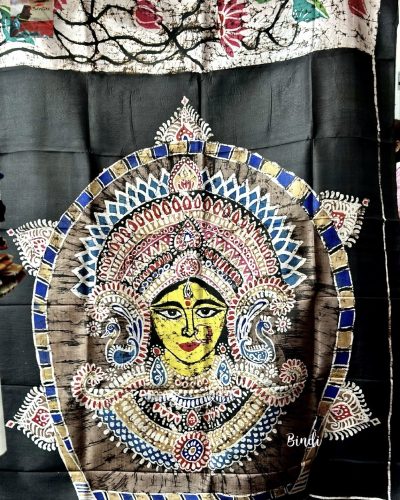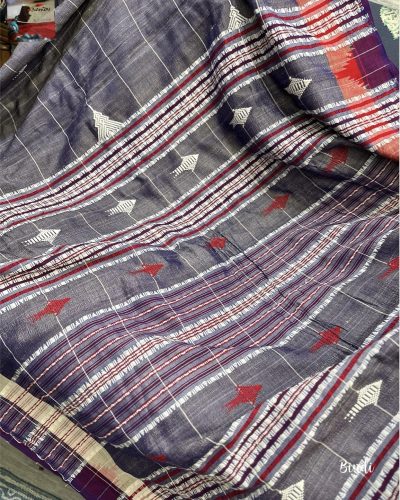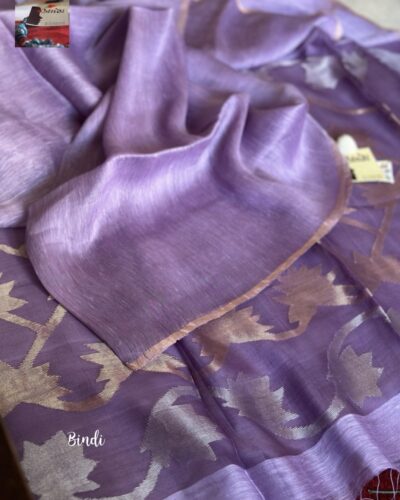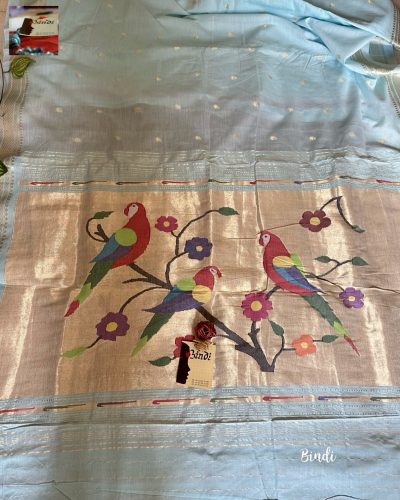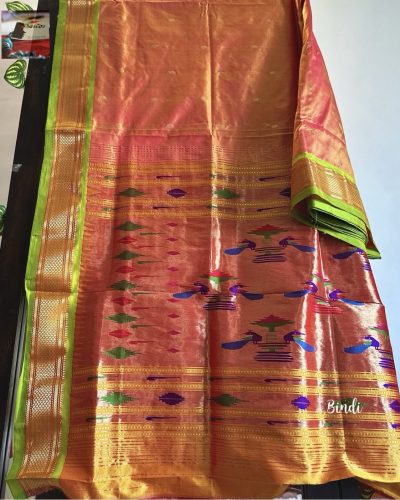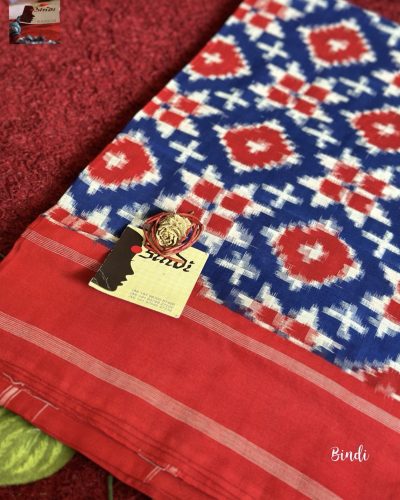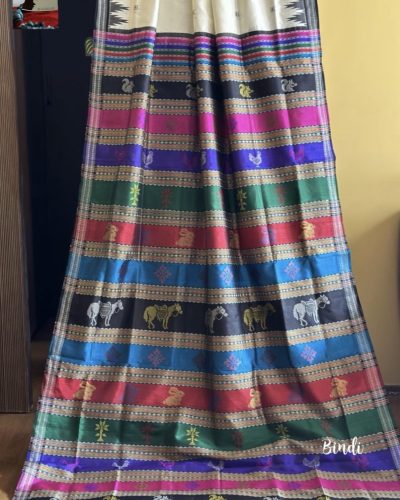-
Tajmahal ~ Pure Katan Kadiyal Banarasi silk
Pure Katan Silk Banarasi
Handwoven #mTaj Mahal weaving border with blouse piece
₹19,995.00 -
Prisha IV ~ Printed Gicha Tussar Silk
Printed pure Gicha tussar lite weight soft and easy to drape saree with contrast blouse piece , saree length 6.3 mts
₹4,195.00 -
Gulaal IV – Handwoven Pure Cotton Saree
Handwoven Pure cotton saree with naksha paar from Bengal
₹1,495.00 -
SUKRITI VI ~ HAND BLOCK PRINTED CHANDERI SILK COTTON SAREE
Hand block printed natural veg colour dyed chanderi silk cotton saree with blouse piece
saree length 6.4 mts including blouse piece
₹2,595.00 -
Morichika – Handwoven Handspun fine cotton jamdani saree
Hand Handspun pure cotton jamdani saree from bengal handloom
saree length 6.4 mts including blouse piece
₹3,850.00 -
ROOPKATHA (Yellow) – HANDWOVEN HANDSPUN FINE COTTON JAMDANI SAREE
Handwoven Handspun fine cotton jamdani saree from bengal handloom
saree length 6.4 mts including blouse piece
₹3,500.00 -
Koree – Handwoven Pure Pochampally ikkat Silk saree
Handwoven Pure Pochampally ikkat silk saree from Telangana
Saree length 6.4 mts including blouse piece
₹18,500.00 -
Gulancha – Gopalpur Tussar by Mulberry Silk Jaala palla Saree
Gopalpur tussar by pure mulberry silk Jaala Palla saree
Warp and weft are the two basic components used in weaving to turn thread or yarn into fabric. The lengthwise or longitudinal warp yarns are held stationary in tension on a frame or loom while the transverse weft (sometimes woof) is drawn through and inserted over and under the warp. Mulberry silk is used in Warp and Gopalpur tussar is used in Weft. An extra set of threads that are woven into the weft between two regular weft threads to create an ornamental pattern in addition to the ground weave. To make a complicated extra weft pattern extra shafts (locally known as Jala) technique is used in Anchal
Saree length 6.4 mts including blouse piece₹20,500.00 -
BENGAL CLASSIC I – HANDWOVEN PURE TUSSAR SAREE
Handwoven pure tussar by tussar saree with the classic revival design from Bengal handloom
Saree length 6.4 mts including blouse piece
₹8,000.00 -
Annapurna – Hand batik painting on premium Katan silk
Batik is a technique of wax-resist dyeing applied to the whole cloth. This technique originated from the island of Java, Indonesia. Batik is made either by drawing dots and lines of the resist with a spouted tool called a canting, or by printing the resist with a copper stamp called a cap. The applied wax resists dyes and therefore allows the artisan to colour selectively by soaking the cloth in one colour, removing the wax with boiling water, and repeating if multiple colours are desired.
Exclusive hand batik painting on pure Katan silk
saree length 6.5 mts including blouse piece
₹10,500.00 -
TITIR II – NATURAL DYED PHODA KUMBHA HANDWOVEN TUSSAR KOTPAD SAREE
Kotpad is a vegetable-dyed fabric woven by the tribal weavers of the Mirgan community of Kotpad village in Koraput district,Odisha , India. Kotpad handloom fabric is the first item from Odisha that received the Geographical Indication tag, in 2005. The Mirgan community of Kotpad is famous for their exquisite organic dyed textile. They usually weave this textile for “Bhotada”, “Dharua” and other motifs of their neighbouring tribal communities. The natural dye is manufactured from the aul tree grown in this area.
Handwoven pure tussar tribal motif with stripes
Saree length 6.5 mts including blouse piece
₹17,950.00 -
Violette Royale ~ Handwoven pure linen Silk Jamdani Saree
Handwoven pure silk linen with jamdani work on the pallu
saree length 6.4 mts including blouse piece
₹7,800.00 -
Munia I ~ HANDWOVEN PURE COTTON PAITHANI SAREE
Paithani sarees are considered to be one of the richest sarees of India upholding the spirit of Maharashtrian culture through ages. While the exquisite silk Paithanis are more popular but high-priced, the elegant cotton Paithanis are no less in terms of intricate craftsmanship. Bindi is proudly showcasing a small but handpicked collection of cotton Paithanis from Yeola, Maharashtra.
Saree length 6.4 mts including blouse piece
₹10,950.00 -
AKSHARA IV – HANDWOVEN PURE PAITHANI SILK
Paithani saree, also known as the ‘Queen of Sarees’ is one of the most popular types of sarees in India. Along with a beautiful and unique pattern, it also carries a cultural significance. The Paithani has its origins in antiquity, hailing from the royal dynasties of the medieval town of Paithan near Aurangabad. This saree signifies years of superfluity and the finesse of Indian handloom, and every piece is characterised with the luxurious and liberal use of gold, as well as floral and bird-inspired motifs. The modern iterations of the saree from Paithan and Yeola town in Nashik are crafted from homegrown silk threads from Bangalore, while zari is sourced from Surat.
Handwoven Duel tone ( Dhoop Chhaon Color) Pure silk traditional peacock pallu paithani saree with running blouse piece
Saree Length 5.5 mts; Blouse piece 80 cm₹16,450.00 -
INI BINI TAPA TINI VI – TELIA RUMAL DOUBLE IKKAT COTTON SAREE
The word ‘Ikat’ comes from the Malay-Indonesian word Mengikat, which means to bind, knot, or wind around. In India, Ikat textiles are known as Patola and Mashru in Gujarat, Bandh in Odisha, Pochampally Ikat and Telia Rumal in Andhra Pradesh and Telangana.
Yarn-resist tie-dye textiles or Telia rumal sarees are woven in double ikkat.
This red and blue Telia Saree length 6.4 mts including blouse piece₹8,800.00
- SALE
- SAREES
- Tussar
- Silk
- Ajrakh Gajji
- Ajrakh Modal
- Assam
- Baluchari
- Banarasi Katan
- Banarasi Organza
- Berhampur
- Chanderi
- Dolabedi
- Gadwal
- Hand Batik
- Hand Block Print
- Himroo
- Kantha
- Kanjivaram
- Kanchipuram
- Khaddi Georgette
- Kalamkari
- Khandua
- Lambani
- Mulberry
- Madhubani Hand Painting
- Muslin
- Matka
- Organza
- Odissa
- Paithani
- Patola
- Pochampally Ikkat
- Pochampally Soft
- Raw Silk
- Shibori
- Swarnachori
- Swarnokatan
- Cotton
- Silk cotton
- Linen
- Dhakai Jamdani
- Apparel
- Jewelries
- About Us
- Contact

